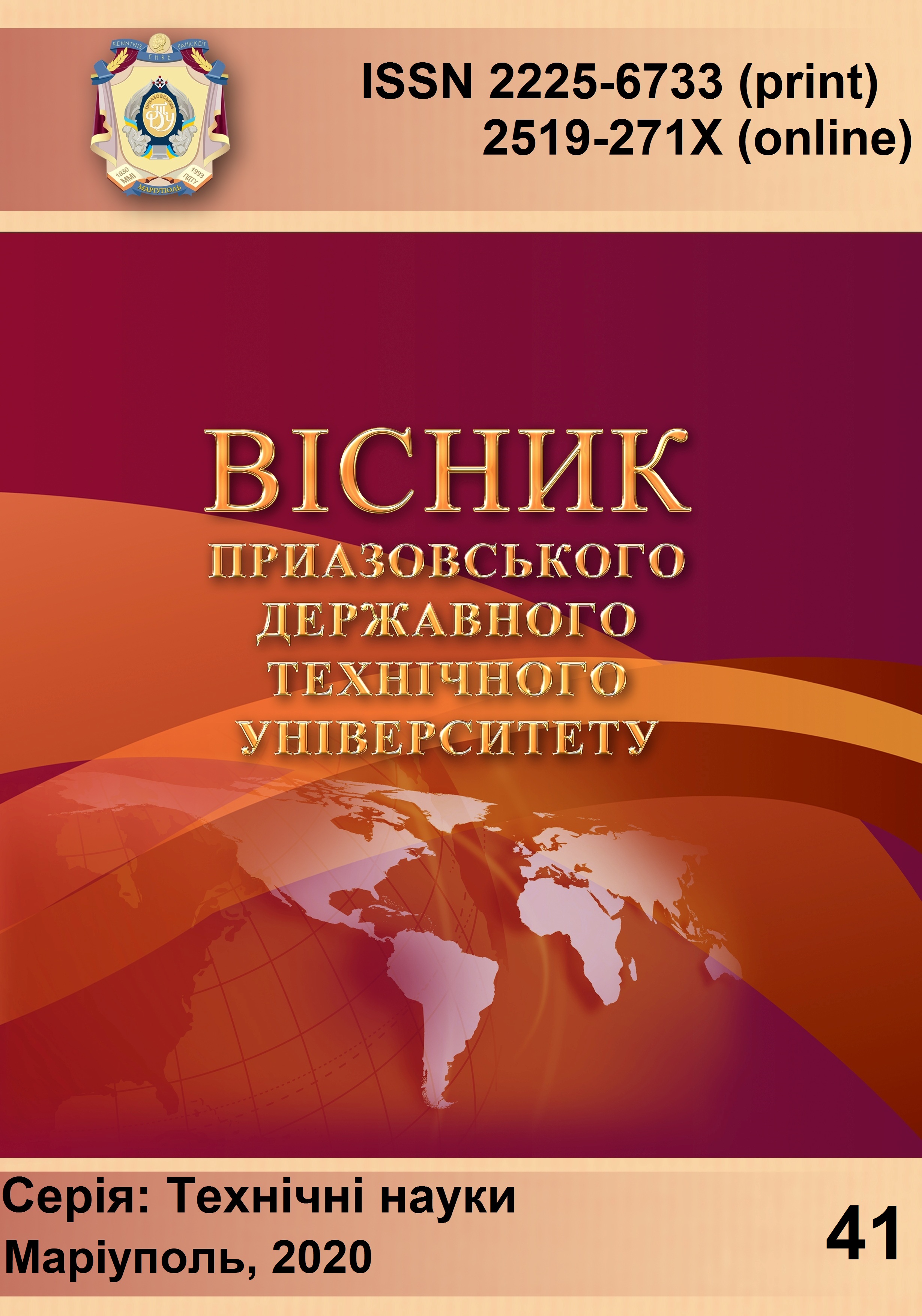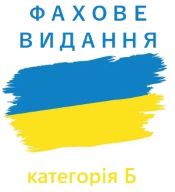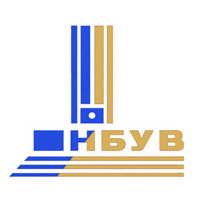Модель визначення часу обслуговування вагонів на металургійному комбінаті
DOI:
https://doi.org/10.31498/2225-6733.41.2020.226210Ключові слова:
металургійне підприємство, рухомий склад, вантажний вагон, експлуатаційна робота, залізнична станція, спрощена модель, цільова функціяАнотація
У статті розглянуті особливості знаходження рухомого складу, який прибуває з зовнішньої мережи на металургійний комбінат. Його просування від «вхідної» станції до «вихідної» розбито поелементно для вивчення та аналізу «слабких місць», які впливають на збільшення часу знаходження вагонів на підприємстві поза встановленим нормативом. Детально розглянуті та проаналізовані операції за всіма багатофункціональними залізничними станціями промислового підприємства, на яких перебувають вантажні вагони. Усі дії з вагонами представлені у вигляді математичної моделі, цільова функція якої складається з суми операцій, які були виконані з вантажними вагонами за кожною станцією їх просування, а також затрат, використаних за ці операції. Запропонована модель дозволяє розраховувати витрати за вагон при урахуванні часу його знаходження на коліях виробничого комбінату. Функція має елементи розгалуження для коректного підрахунку витрат за різними обставинами, які виникають у роботі підприємства. Виявлені причини, які впливають на перепростої вагонів зверх нормативу і, як наслідок цього явища, збільшення вартості за використання вантажними вагонами
Посилання
Козаченко Д.Н. Проблемы стимулирования отправительской маршрутизации на железнодорожном транспорте / Д.Н. Козаченко // Вісник Східноукраїнського національного Університету імені Володимира Даля. – 2013. – № 3 (192). – С. 207-211.
Козаченко Д.М. Програмний комплекс для імітаційного моделювання роботи залізничних станцій на основі добового плану-графіка / Д.М. Козаченко, Р.В. Вернигора, Р.Г. Коробйова // Залізничний транспорт України. – 2008. – № 4. – С. 18-20.
Бутько Т.В. Формалізація процесу управління парком вантажних вагонів операторських компаній / Т.В. Бутько, О.Е. Шандер // Восточно-Европейский журнал передовых технологий. – 2014. – № 2 (3). – С. 55-58. https://doi.org/10.15587/1729-4061.2014.22798
Formation of an automated technology of cargo transportation control on the direction / T. Butko, O. Kostiennikov, L. Parkhomenkо, V. Prohorov, G. Bogomazowva // Eastern-European journal of enterprise technologies. – 2019. – Vol. 1, № 3 (97). – Рp. 6-13. – Mode of access: https://doi.org/10.15587/1729-4061.2019.156098.
Ломотько Д.В. Аналіз та удосконалення існуючих підходів до раціонального розподілу транспортних ресурсів / Д.В. Ломотько, А.О. Ковальов, О.В. Ковальова // Збірник наукових праць Українського державного університету залізничного транспорту. – 2015. – Вип. 156. – С. 45-47.
Губенко В.К. Общий курс промышленного транспорта : учебник для ВУЗов / В.К. Губенко, В.Э. Парунакян. – М. : Транспорт, 1994. – 199 с.
Investigation into the bimodal transportation process by modelling rail module states / О. Lavrukhin, V. Zapara, Y. Zapara, O. Shapatina, G. Bogomazova // Transport Problems. – 2017. – Vol. 12, iss. 2. – Рp. 99-112. – Mode of access: https://doi.org/10.20858/tp.2017.12.2.10.
Кирицева Е.В. Система планирования и управления порожними вагонопотоками на внутризаводских перевозках / Ю.В. Гусев, Е.В. Кирицева // Scientific World Jornal. – 2017. – Iss. 15, vol. 2. – С. 74-80.
Кирицева Е.В. Анализ продвижения внешнего вагонопотока в транспортной логистике металлургического предприятия / Е.В. Кирицева, Ю.В. Гусев // Modern engineering and innovative technologies. – 2019. – Iss. 8, part 1. – С. 79-85. – Mode of access: https://doi.org/10.30890/2567-5273.2019-08-01-015.
Кіріцева О.В. Спрощена модель визначення слабкіх місць вагонопотоків металургійного комбінату / О.В. Кіріцева, О.В. Клецька, М. Тимофеенко // Сучасні енергетичні установки на транспорті, технології та обладнання для їх обслуговування СЕУТТОО-2020: 11 міжн. наук.-практ. конф. – Херсон : Херсонська державна морська академія, 2020. – С. 309-311.
Кіріцева О.В. Підхід до визначення ефективних заходів підвищення якості роботи залі-зничного транспорту металургійного підприємства / О.В. Кіріцева, О.В. Клецька, Г.Л. Новак // Енергоефективність на транспорті: міжн. наук.-практ. конф. (18-20 листопада 2020 р.; Харків). – С. 23-25.
##submission.downloads##
Опубліковано
Як цитувати
Номер
Розділ
Ліцензія
Авторське право (c) 2020 О.В. Кіріцева , О.В. Клецька , Д.А. Іванченко , А.C. Ігнатова

Ця робота ліцензується відповідно до Creative Commons Attribution 4.0 International License.
Журнал "Вісник Приазовського державного технічного університету. Серія: Технічні науки" видається під ліцензією СС-BY (Ліцензія «Із зазначенням авторства»).
Дана ліцензія дозволяє поширювати, редагувати, поправляти і брати твір за основу для похідних навіть на комерційній основі із зазначенням авторства. Це найзручніша з усіх пропонованих ліцензій. Рекомендується для максимального поширення і використання неліцензійних матеріалів.
Автори, які публікуються в цьому журналі, погоджуються з наступними умовами:
1. Автори залишають за собою право на авторство своєї роботи та передають журналу право першої публікації цієї роботи на умовах ліцензії Creative Commons Attribution License, яка дозволяє іншим особам вільно розповсюджувати опубліковану роботу з обов'язковим посиланням на авторів оригінальної роботи та першу публікацію роботи в цьому журналі.
2. Автори мають право укладати самостійні додаткові угоди, які стосуються неексклюзивного поширення роботи в тому вигляді, в якому вона була опублікована цим журналом (наприклад, розміщувати роботу в електронному сховищі установи або публікувати у складі монографії), за умови збереження посилання на першу публікацію роботи в цьому журналі.









